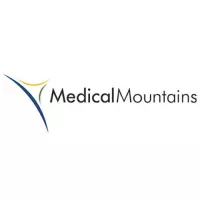Tuttlingen - "Top experts have to deal with inconsistent procedures that push them to their physical and psychological limits," says MedicalMountains Managing Director Julia Steckeler, explaining the dilemma: Regulations not only affect products, but also the people who use them deal with it. Harmonization and digitization are possible solutions - they were the focus of the symposium "International Approval of Medical Devices" in Tuttlingen.
For several years, the "Regulated Product Submission" working group within the International Medical Device Regulators Forum (IMDRF) has been working on setting up a globally uniform, dynamic structure for the submission of applications for approval, the "Non-In Vitro Diagnostic Device Regulatory Submission Table of Content". “, short nIVD ToC. As a representative of the EU, Dr. Rainer Edelhäuser is active in the committee. At the symposium, the Director of the Central Office of the Federal States for Health Protection for Drugs and Medical Devices (ZLG) provided information on the current status of the nIVD ToC. The draft revision of the previous document (N9) is in public consultation until April 15th. The challenge is that the regulatory framework of the participating countries and associations of states are in flux, reminded Dr. Rainer Edelhauser. For example, the MDR requirements for technical documentation from Annexes II and III should be reflected in the international structure. However, this is opposed by the fact that individual regions do not agree to the inclusion of a "post-market" chapter, for example, and notified bodies maintain their own interpretations of the requirements. Harmonization, so the impression, has to start on a small scale. The subsequent round of questions went in a similar direction. Dr. Rainer Edelhäuser as desirable, but not feasible without legal certainty for the testing organizations. Their task is to meet the requirements of the MDR, i.e. to implement what the regulation requires. There was unanimous encouragement to force the structured dialogue between manufacturers and notified bodies initiated in the MDCG position paper 2022-14 - and also to demand it from the industry.
International exchange of authorities inspires confidence
Despite many unimplemented suggestions, there is still progress, the ZLG director turned to the international perspective. This includes in particular the exchange of agency representatives at IMDRF level. Patrick Axtell came to Tuttlingen from the US FDA specifically to present the eSTAR process. With eSTAR, applicants are guided through the individual questions via a dynamic PDF document, the structure of which adapts to the respective product categories. After the upload, it is possible to track the progress of processing online. Based on the nIVD ToC, eSTAR is currently also being introduced at Health Canada as part of a pilot project; other countries could follow. Patrick Axtell understood how to convey the dynamics of the development of eSTAR, with foreseeable next steps towards more efficiency and harmonization.
eSTAR as a role model for Europe
Julia Steckeler saw in eSTAR a model with exemplary character for Europe - especially since the system there is threatened with a "meltdown", according to Prof. Dr. Christian Johner (Johner Institute GmbH). "Disruption is necessary," he emphasized, drawing the picture of a common platform for manufacturers, notified bodies and authorities to directly access individual, structured data. Only about a third of a technical documentation is actual content, the remaining 70 percent is “value-free”. Without the ballast, time is not only gained for international approvals, but above all to “really do something for the safety and performance of medical devices.”
At the beginning of day 2 of the symposium, a team from Med Alliance BW presented the developments that are emerging in important target markets. On the one hand, approaches to further harmonization could be identified. For example, that the UDI system is gaining ground worldwide and that China is partly based on European standards. On the other hand, new hurdles have emerged, for which a look at the European neighborhood - Switzerland and Great Britain - was sufficient. The two subsequent workshops led by Veeva Systems took up the nIVD ToC again: how global technical documentation can be based on it and used as a lever for market access.





